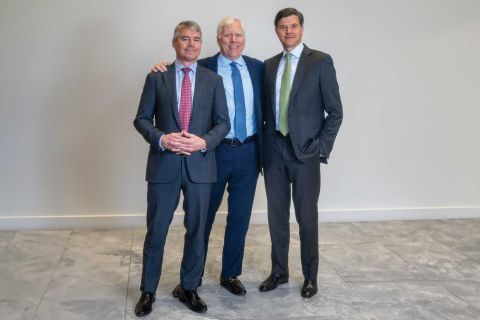Learn more about Hart Energy Conferences
Get our latest conference schedules, updates and insights straight to your inbox.
The value of traded global markets for carbon dioxide (CO2) permits reached a record 850 billion euros ($909 billion) last year, analysts at Refinitiv said on Feb. 7.
Around 12.5 billion tonnes of carbon permits changed hands in the world's emissions markets - 20% less than the previous year - but the value of the markets rose by 14% as prices for permits were much higher.
Emissions trading schemes are market-based tools meant to limit greenhouse gas emissions. They put a cap on the amount countries or companies can emit, and if they exceed those limits, they can buy permits from others.
The world's biggest carbon market, the EU's Emissions Trading System (EU ETS), which was launched in 2005, was worth around 751 billion euros last year, up 10% from the previous year and representing 87% of the global total.
The price of carbon permits on the EU ETS averaged over 80 euros a tonne last year, 50% higher than the year before as energy prices surged following the war in Ukraine.
Prices in British and North American markets were also higher than in 2021.
Last year, EU lawmakers also worked to reform the EU ETS as part of its efforts to tighten climate policies and agreed to cut the number of permits in the system, which was also bullish for prices.
"All eyes will be on the implementation of this legislation in 2023, with a massive one-off reduction in allowances scheduled for 2024," Refinitiv analysts said.
"On the flipside, sales of extra allowances to finance the REPowerEU plan will inject additional supply and thus weigh on prices. Gas prices will remain an important driver for EU ETS prices in 2023," they added.
The REPowerEU plan is aimed at reducing the bloc's reliance on Russian energy supplies and involves selling extra EU carbon permits to fund itself.
The two regional carbon markets in North America - the Western Climate Initiative and the Regional Greenhouse Gas Initiative - were worth over 60 billion euros combined last year, the report said.
China's national emissions trading scheme launched in mid-2021. In contrast to other schemes, China’s emission cap is based on emissions intensity.
It was worth 504 million euros last year, down 61% from the previous year. The scheme saw limited trading as its development was slowed by other priorities, such as the COVID-19 pandemic, and as the government did not release a new permit allocation plan.
Recommended Reading
Exxon, Chevron Tapping Permian for Output Growth in ‘24
2024-02-02 - Exxon Mobil and Chevron plan to tap West Texas and New Mexico for oil and gas production growth in 2024, the U.S. majors reported in their latest earnings.
CEO: Coterra ‘Deeply Curious’ on M&A Amid E&P Consolidation Wave
2024-02-26 - Coterra Energy has yet to get in on the large-scale M&A wave sweeping across the Lower 48—but CEO Tom Jorden said Coterra is keeping an eye on acquisition opportunities.
Hess Corp. Boosts Bakken Output, Drilling Ahead of Chevron Merger
2024-01-31 - Hess Corp. increased its drilling activity and output from the Bakken play of North Dakota during the fourth quarter, the E&P reported in its latest earnings.
E&P Earnings Season Proves Up Stronger Efficiencies, Profits
2024-04-04 - The 2024 outlook for E&Ps largely surprises to the upside with conservative budgets and steady volumes.
Petrie Partners: A Small Wonder
2024-02-01 - Petrie Partners may not be the biggest or flashiest investment bank on the block, but after over two decades, its executives have been around the block more than most.





